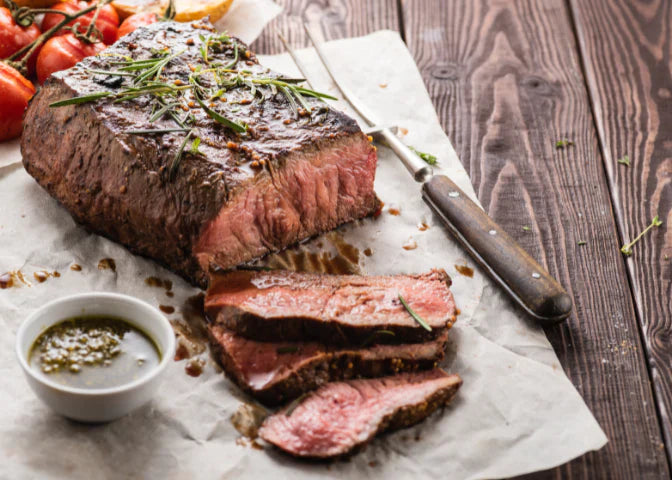Whether ribeye, porterhouse, or tenderloin, the ideal steak has to be sizzling, tender, and juicy. It is so satisfying to bite into a flavorful steak that has a slightly seared crust, or a crispy skin on the outside. Barbeque food lovers agree that there’s a particular pitmaster trick that goes into creating those perfect melt-in-the-mouth steaks. Many believe that resting meat after smoking creates all the magic, while another group of barbeque lovers says it’s a myth. We will discuss both sides in this article to give you an authentic verdict.
Benefits of Resting Meat
Let’s begin with the most popular belief: rested smoked meat had more benefits. Many pitmasters have adopted this method during food smoking because it gives more succulent and flavorful meat. If the meat rests outside the food smoker, it also turns out more tender than meat immediately served out of the smoker.
Here is some of the evidence that supports this fact. As we all know, meat is loaded with protein. These proteins are bonded inside muscle fiber. The moment we put a steak inside the food smoker and it starts to cook, the protein bonds loosen up. This process releases fluid, tightening the muscle fiber. The fluid naturally moves towards the center of the meat. When this steak is cut and served immediately after food smoking, the fluid spills out on the plate, making the serving messy. The tightened fiber can also result in dried-out steak, making it tasteless.
If you serve the meat after resting it for a few minutes out of the food smoker, the steak is likely to be more juicy and tender. When the meat rests, its temperature starts dissipating, and the protein starts re-bonding. This process loosens the fiber, reabsorbing all the natural fluid released during smoking. So, rested steak usually means more flavorful, succulent meat.

Why do some believe resting meat isn’t necessary?
Home cooks and some cookbook authors alike are not on board with this explanation. They think resting meat after smoking can be a mistake for several reasons:
- Resting might cool the meat, making it unappetizing. Steak is best when it is sizzling hot.
- The steak will continue to cook with the residual heat. This might result in overcooked steak.
- The fat in the fibers might solidify, giving a congeal feeling inside the mouth.
- The seared crust on the outer surface of the steak might soften while resting, and there’s no flavor in a softened crust.
- The crispy skin of whole smoked chicken or turkey might turn chewy when rested for a while
Factors Determining the Tenderness of Smoked Steak

The information stated above might have left you confused about whether or not to rest meat after smoking. These were just popular arguments for and against resting meat. Before you decide what to do with your brisket or ribeye at your next BBQ, here is something that you need to know.
The tenderness of the meat depends on several factors, which can determine the best ways to serve delicious smoked steaks.
Cooking Method: Food smoking is considered one of the ideal ways to get perfectly barbequed tender steaks. Grilling, searing, or roasting might rip the muscles of excess moisture, turning the steak rubbery or dry.
Cooking Equipment: Smoking steaks in a pro food smoker and using an improvised smoker can make a world of difference to your steak. Improvised food smokers don’t have temperature control or a steaming facility to cook the meat to perfection. On the other hand, a quality food smoker like a Bradley Smoker can make food smoking a breeze. Some smokers come with digital temperature control and time settings to prevent overcooking or undercooked meat.
Cooking Temperature: High heat can result in maximum moisture loss, turning the steak dry. The same thing can happen with a fluctuation in temperature. This is the reason pitmasters often prefer quality food smokers with temperature controls to do the job.
Cut and Quality of Meat: Raw, fresh meat has a higher ability to retain moisture while smoking than frozen meat. Also, lean cuts like tenderloin or sirloin tend to lose moisture faster than fatty meats like ribs or shanks. Lean cuts also don’t reabsorb the released fluid as much as fatty meats do while resting.
Brine/Rub: Wet brine adds more moisture to the meat, helping it preserve its tenderness even after smoking. Brining is recommended for leaner cuts that dry out faster. Rub adds flavor to the steak by mixing with the released fluid and muscle fibers. Dry rubs are best suited for fatty cuts of meat.
Final Thoughts
With that, we hope you are now more confident to decide whether or not your steak needs resting after smoking. For more great ideas on how to get the most of your Bradley Smoker, check out the awesome articles on our Bradley Smoker Food Smoking Blog for more tips & tricks.
Check out a few more steak articles here:
5 Steak Doneness Internal Temperatures & Times
The Way You Should Be Tenderizing Steak
How to Cook the Perfect New York Strip Steak
Here’s the Best Way to Tenderize Your Smoked Steaks





